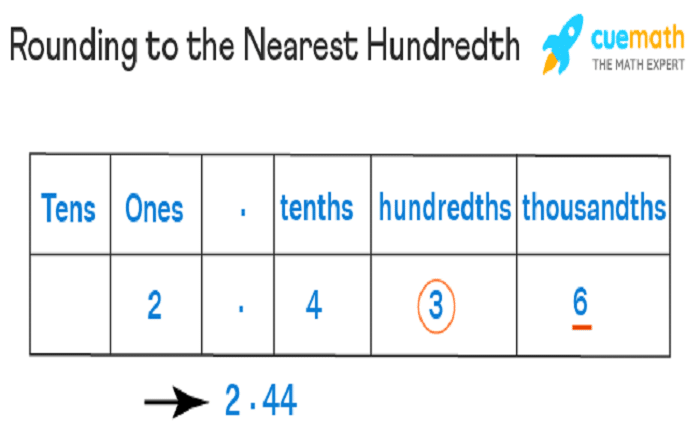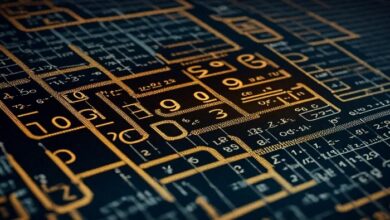
Introduction
In the world of mathematics, precision is key. One concept that exemplifies this is the “nearest hundredth.” Whether you’re dealing with finances, measurements, or scientific data, rounding to the nearest hundredth can make your numbers both manageable and accurate. This blog post will delve into the significance of the nearest hundredth, its applications, and provide a comprehensive understanding of how to use it in various scenarios.
What is the Nearest Hundredth?
The nearest hundredth refers to rounding a number to two decimal places. In other words, it’s the second digit to the right of the decimal point. For example, rounding 3.456 to the nearest hundredth results in 3.46. This concept helps in simplifying numbers without significantly losing accuracy, making it easier to interpret and use them.
Importance of Rounding to the Nearest Hundredth
Rounding to the nearest hundredth is crucial in many fields. It enhances readability, aids in precise calculations, and helps in maintaining consistency in data representation. In finance, it ensures that monetary values are accurate to the cent, while in science, it allows for precise measurement and comparison of data.
How to Round to the Nearest Hundredth
Rounding to the nearest hundredth is straightforward. Identify the third digit to the right of the decimal point. If this digit is 5 or greater, round the second digit up by one. If it is less than 5, keep the second digit unchanged. For example, 7.845 rounded to the nearest hundredth is 7.85, whereas 7.843 becomes 7.84.
Applications in Financial Calculations
In financial calculations, rounding to the nearest hundredth is essential. Currencies are typically divided into units and hundredths, such as dollars and cents. When calculating interest, taxes, or expenses, precision to the nearest hundredth ensures accurate financial reporting and prevents discrepancies.
Use in Scientific Measurements
Scientific measurements often require high precision. Rounding to the nearest hundredth allows scientists to present data succinctly without sacrificing accuracy. Whether measuring chemical concentrations, physical properties, or experimental results, this level of precision is often sufficient and practical.
Importance in Educational Settings
Teaching students how to round to the nearest hundredth is fundamental in education. It builds a foundation for understanding more complex mathematical concepts. By mastering this skill, students can handle various mathematical problems more efficiently, preparing them for advanced studies and real-world applications.
Practical Examples in Daily Life
The nearest hundredth is used frequently in daily life. For instance, when calculating discounts during shopping, measuring ingredients for recipes, or determining fuel efficiency in cars, rounding to the nearest hundredth provides a balance between simplicity and accuracy.
Digital Precision and Technology
In the digital age, precision is paramount. Computers and digital devices often process and display data rounded to the nearest hundredth. This standardization helps in ensuring that information is consistent and easy to interpret, whether in software development, data analysis, or online transactions.
Common Mistakes and How to Avoid Them
A common mistake when rounding to the nearest hundredth is misunderstanding the role of the third decimal place. Always remember that if the third digit is 5 or more, the second digit increases by one. Practicing with examples can help avoid such errors and build confidence in rounding correctly.
Advanced Mathematical Concepts Related to Rounding
Beyond the nearest hundredth, rounding extends to various mathematical concepts like significant figures, decimal places, and scientific notation. Understanding these related concepts can deepen your grasp of precision and its importance in mathematics and its applications.
Conclusion
Rounding to the nearest hundredth is a fundamental mathematical skill with wide-ranging applications. From financial calculations to scientific measurements, it ensures precision and clarity. By mastering this concept, you can enhance your mathematical proficiency and apply it effectively in both everyday situations and professional contexts.
FAQs
1. What does rounding to the nearest hundredth mean? Rounding to the nearest hundredth means adjusting a number to two decimal places. For example, 4.567 rounded to the nearest hundredth is 4.57.
2. Why is rounding to the nearest hundredth important? It enhances readability and precision, essential in fields like finance and science where accurate data representation is crucial.
3. How do you round 3.456 to the nearest hundredth? To round 3.456 to the nearest hundredth, look at the third decimal place (6). Since it is 5 or greater, round the second decimal place up from 5 to 6, resulting in 3.46.
4. Where is rounding to the nearest hundredth commonly used? It is commonly used in financial transactions, scientific data measurement, education, digital technology, and daily activities like shopping and cooking.
5. What are some common mistakes when rounding to the nearest hundredth? A common mistake is incorrectly rounding the second decimal place by ignoring the value of the third decimal place. Ensuring correct understanding and practice can help avoid this error.




